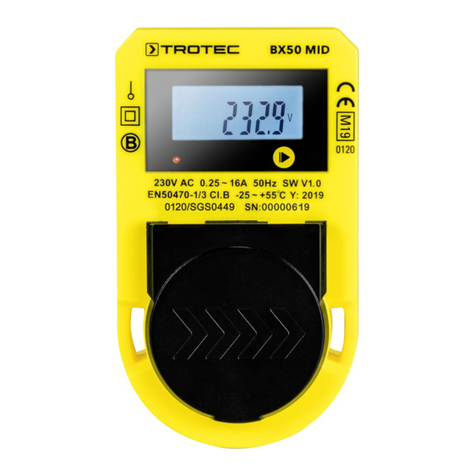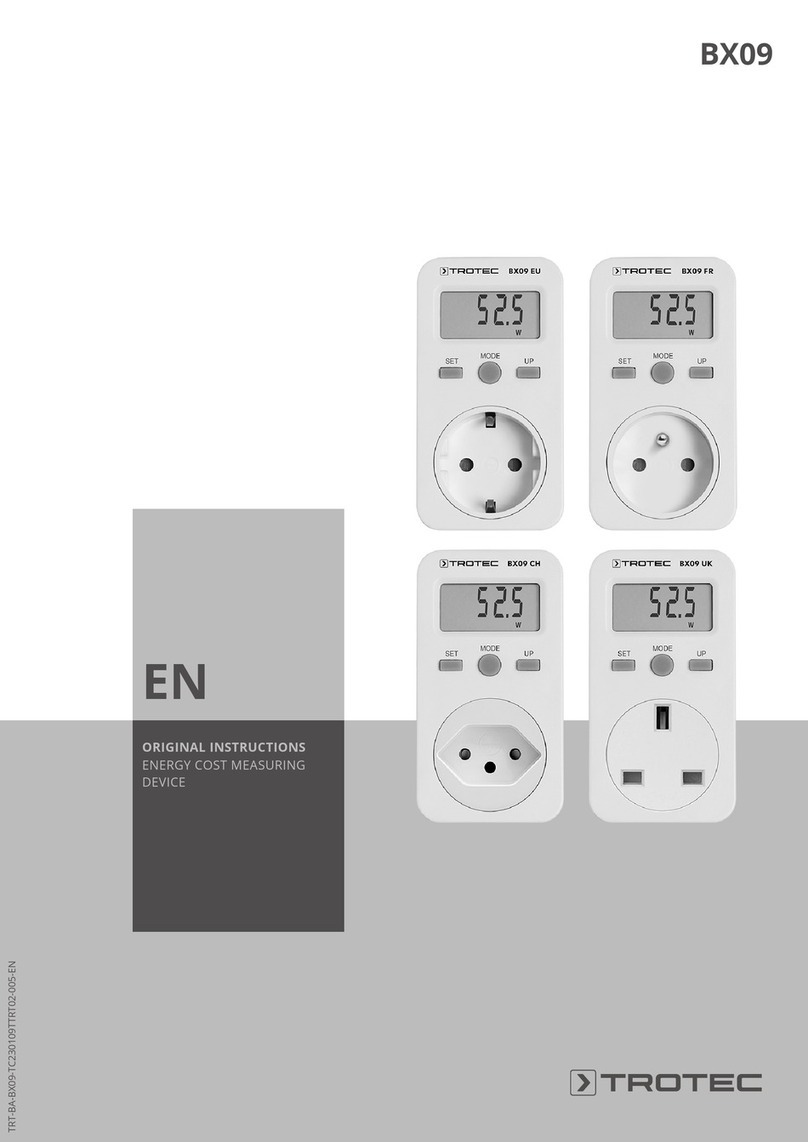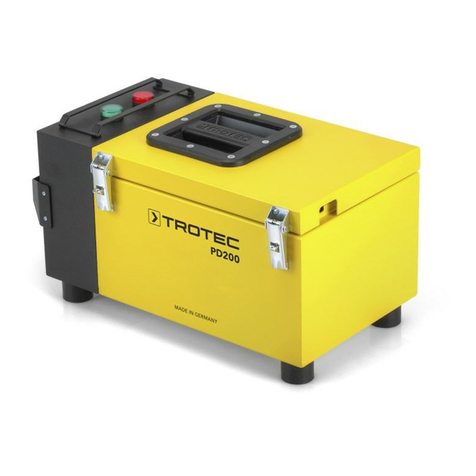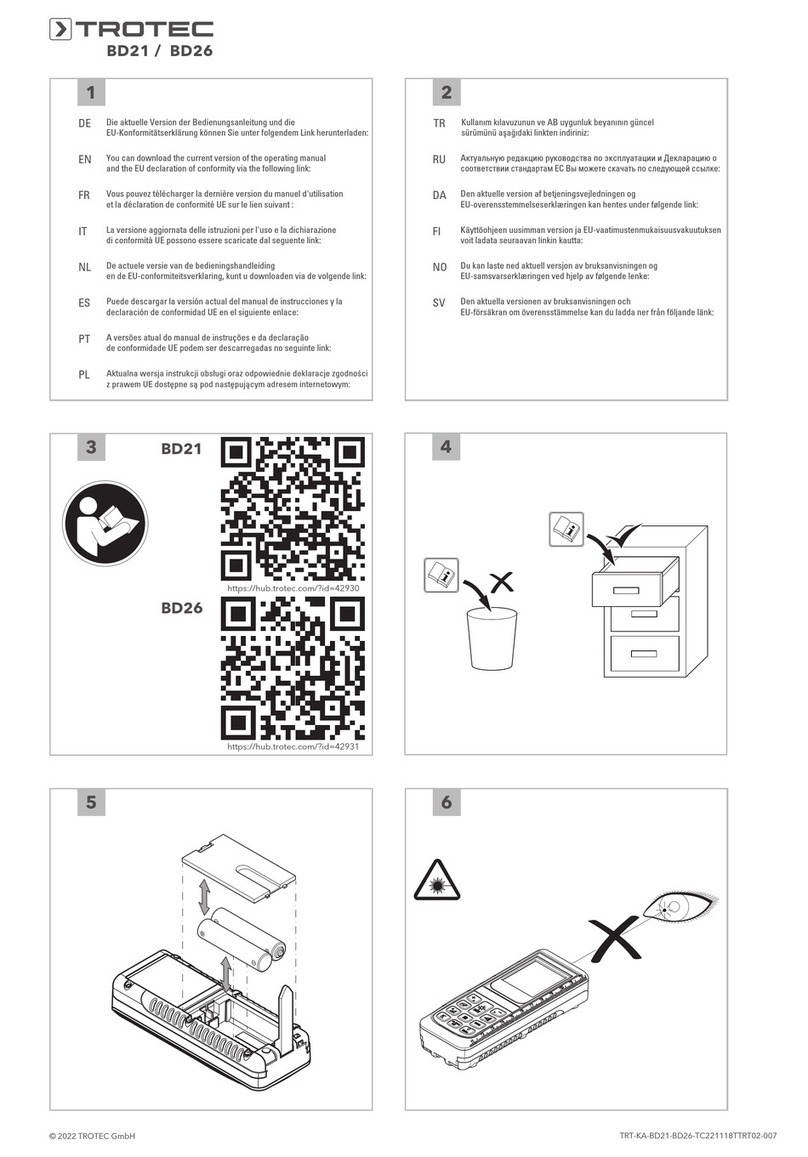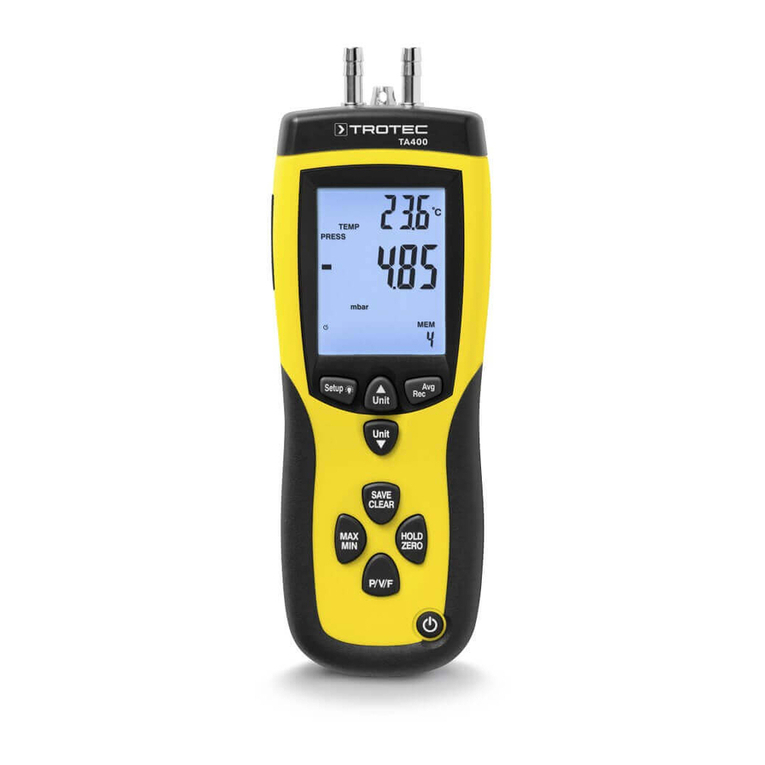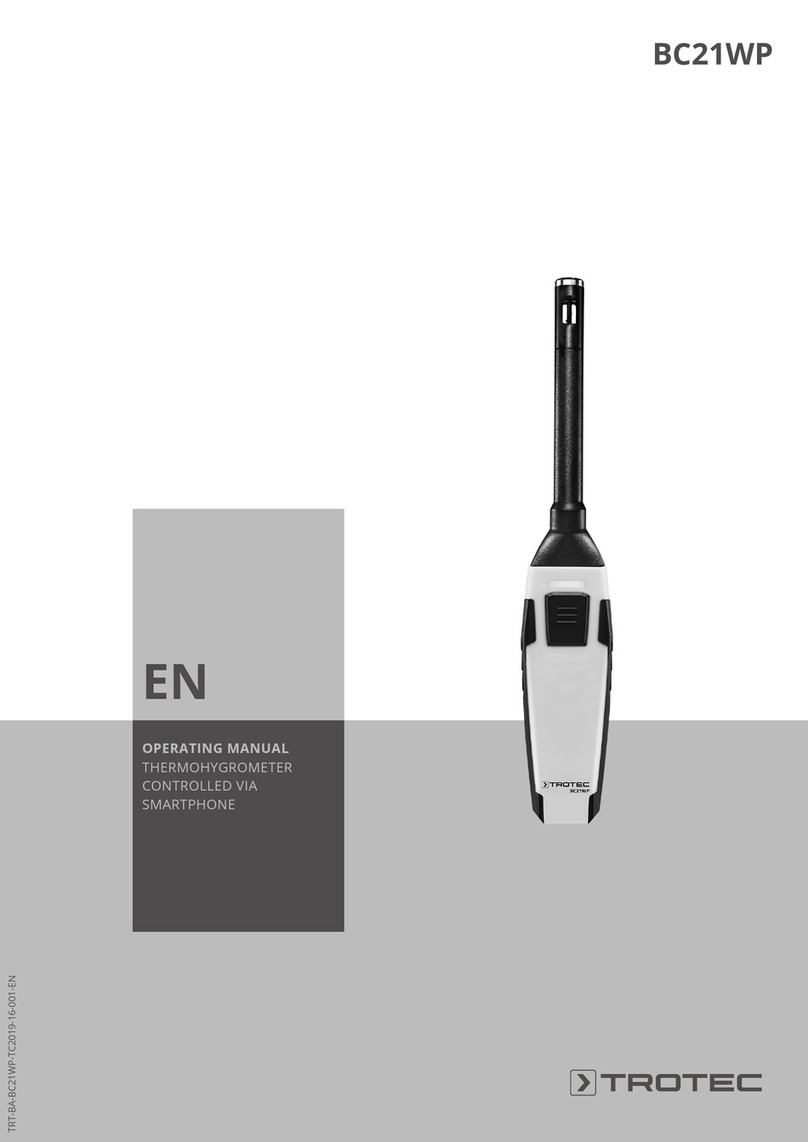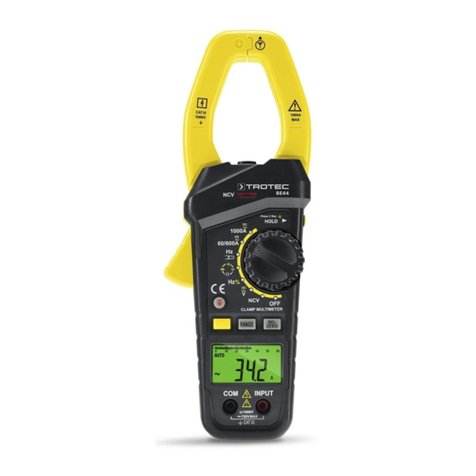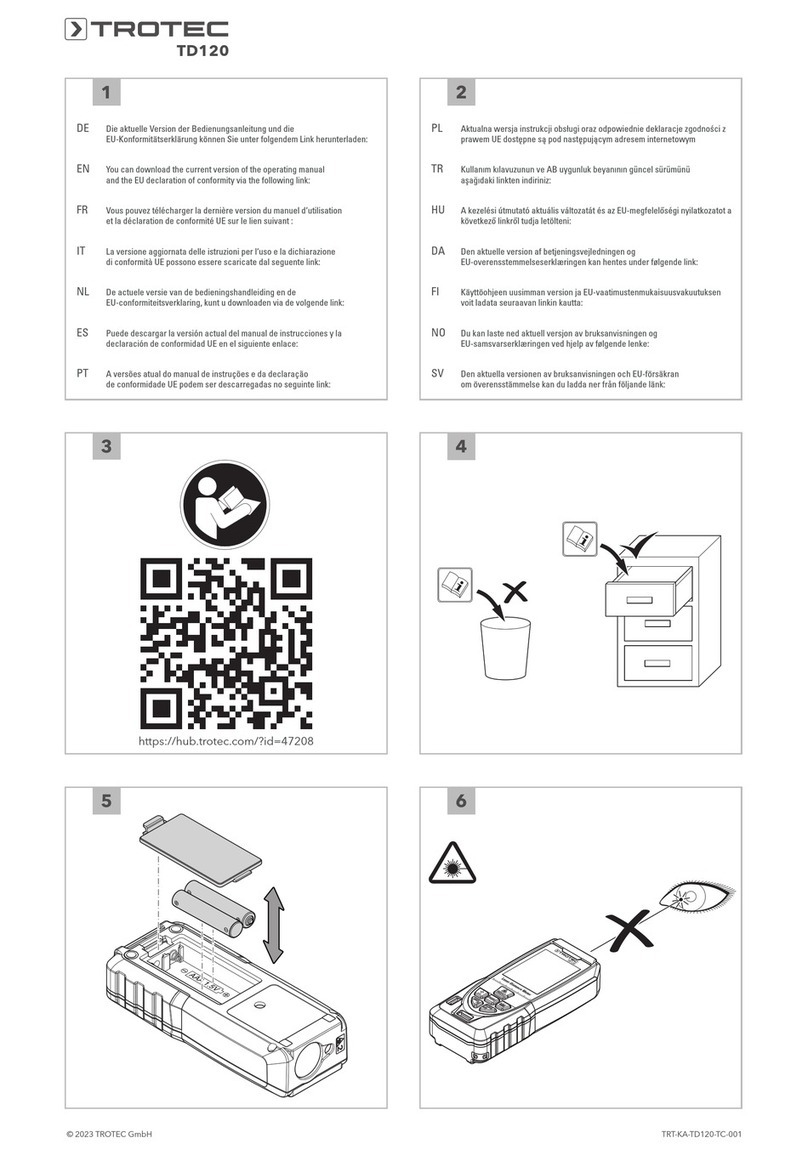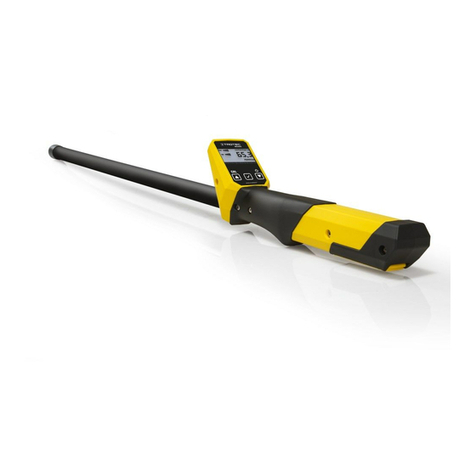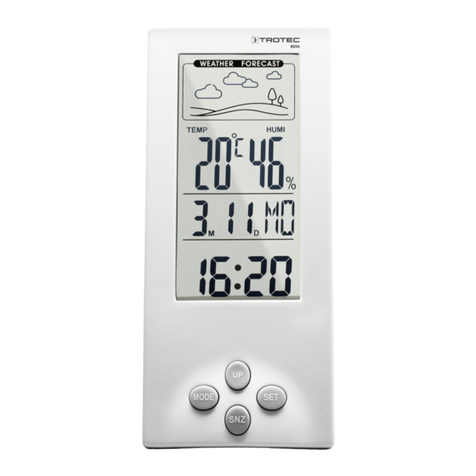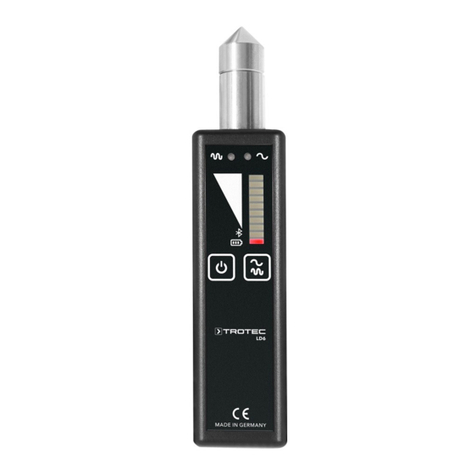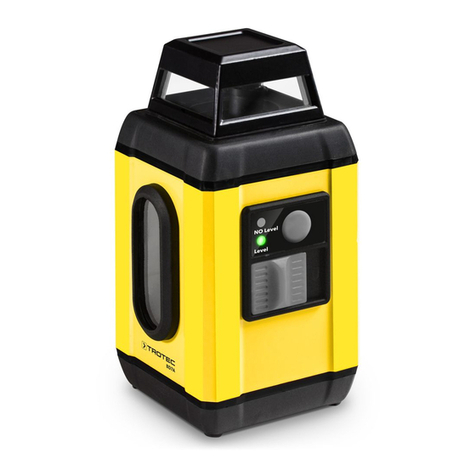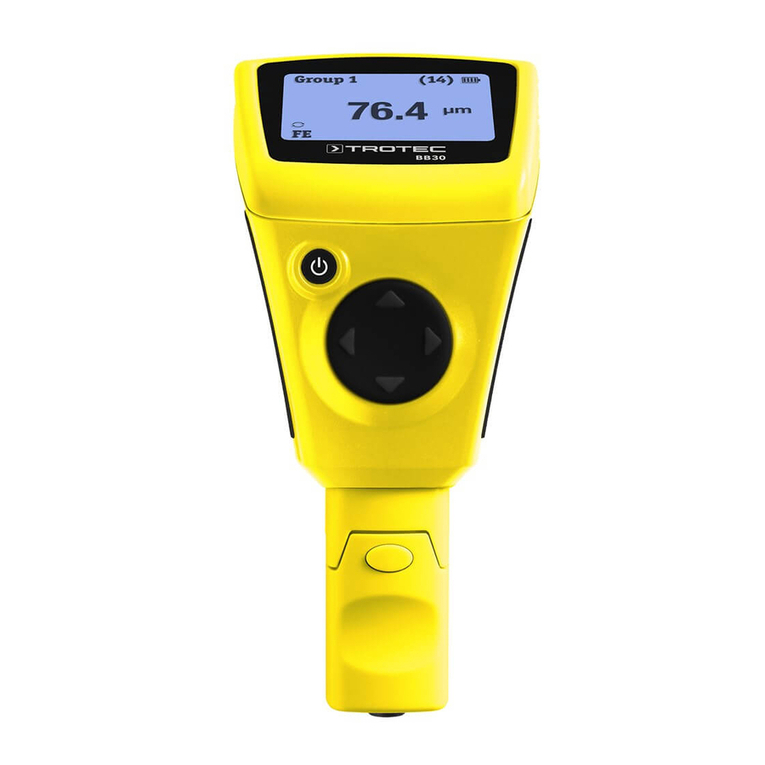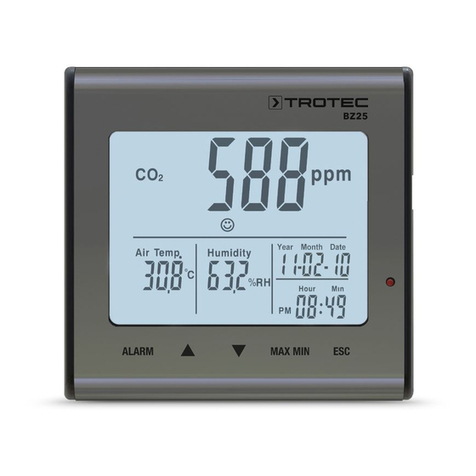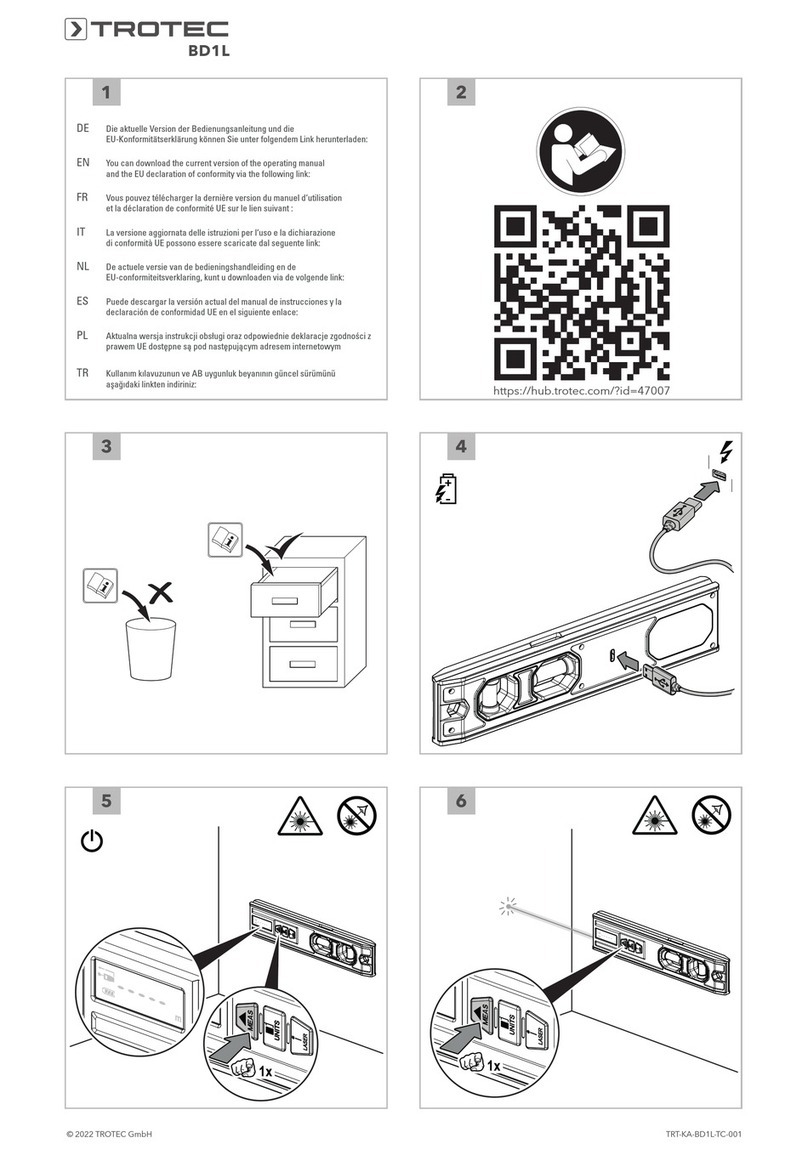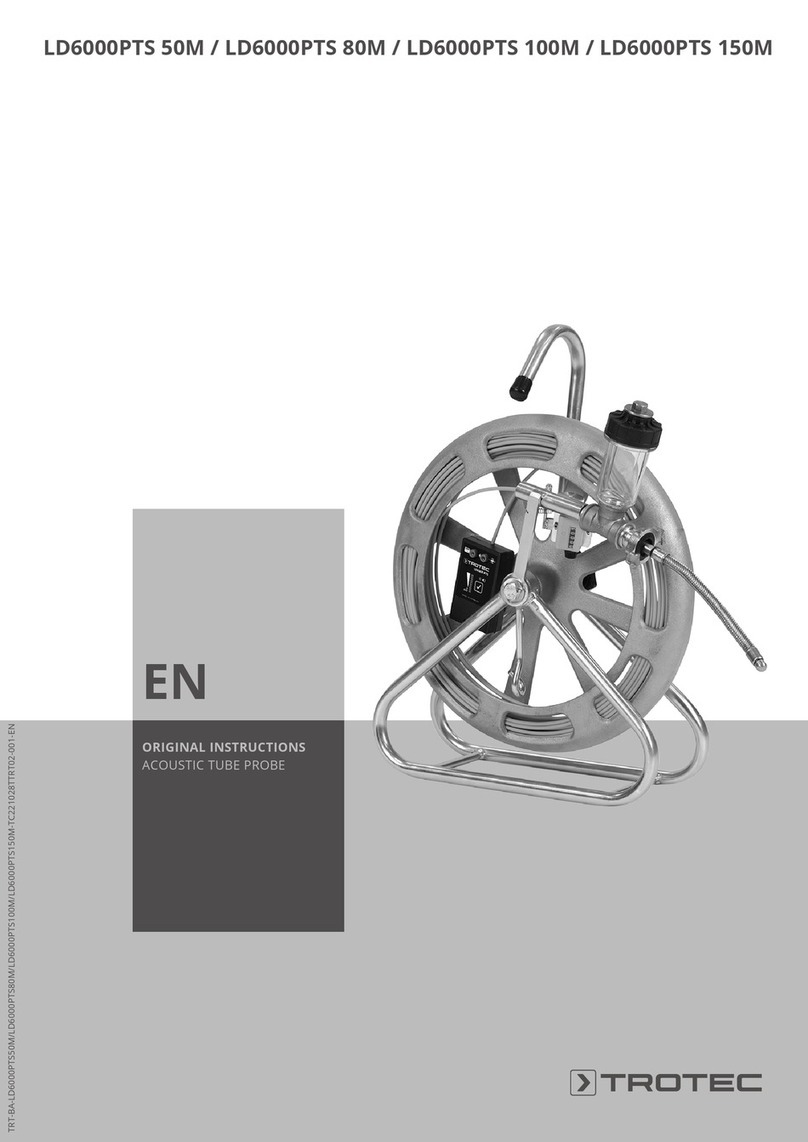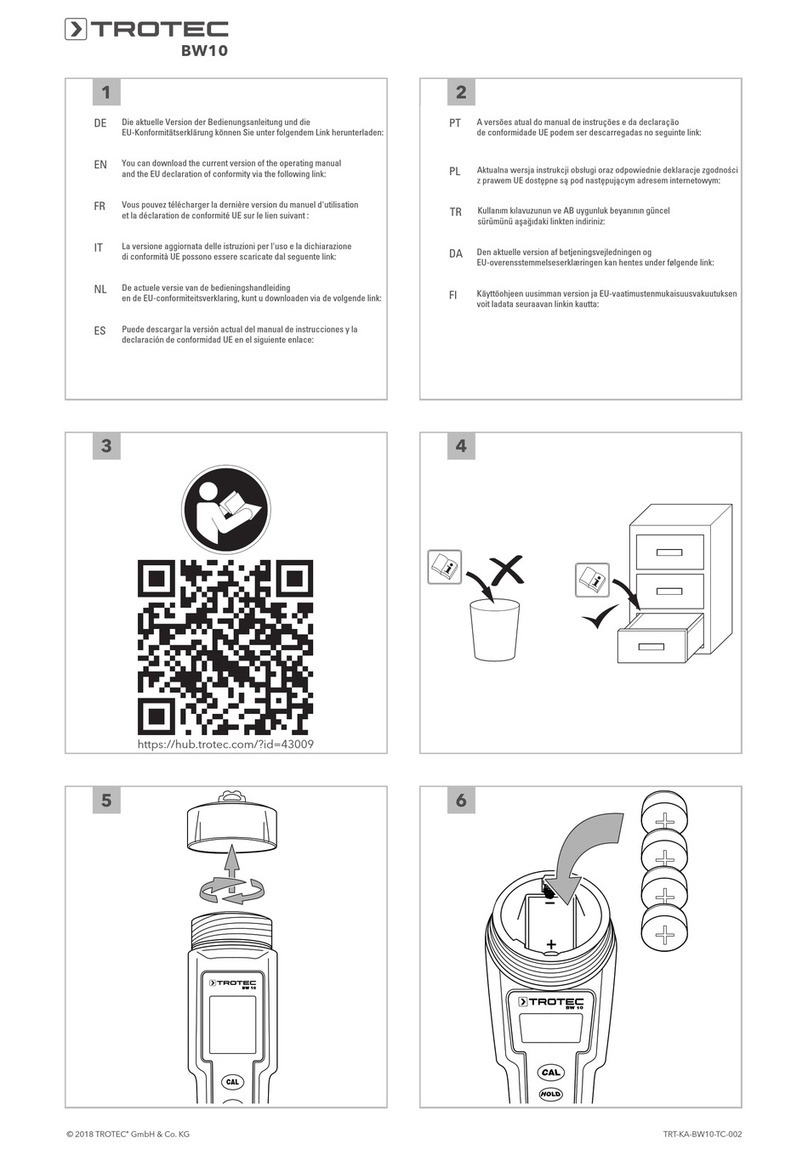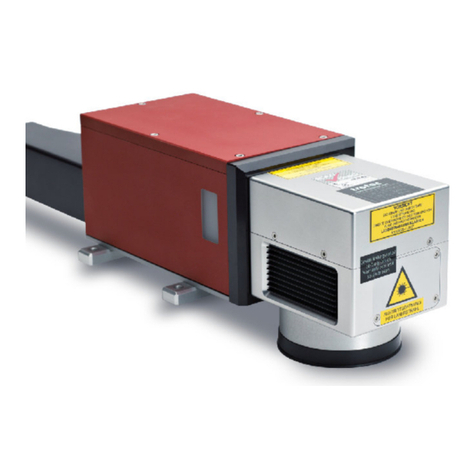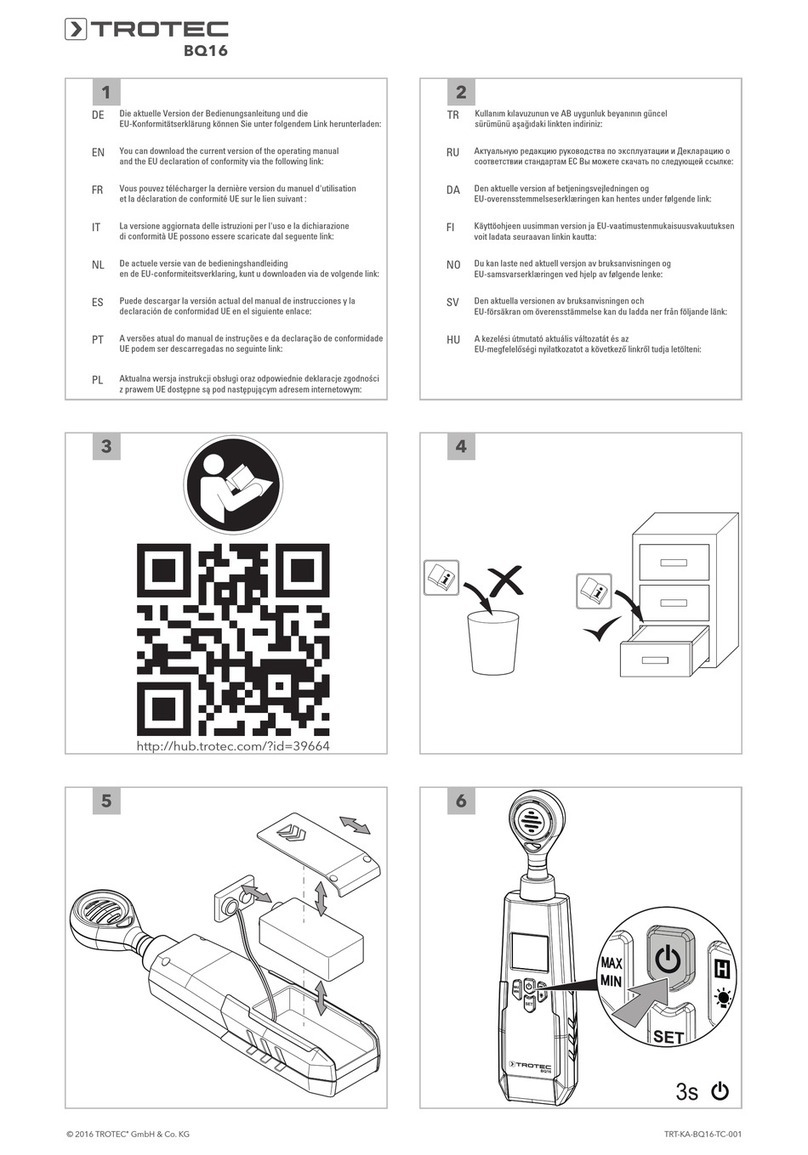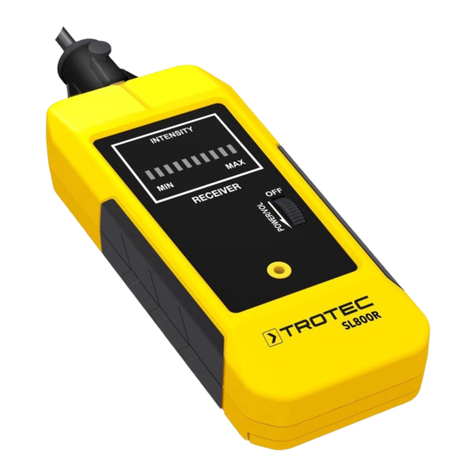
EN 3
clamp meter BE 38
• Keep new and used batteries and an open battery
compartment away from children.
• Observe the storage and operating conditions (see
Technical data).
• Disconnect the measuring cables from the device before
replacing the batteries.
Intended use
Only use the device for measurements within the measuring
ranges and overvoltage categories specified in the technical
data. Use the specified measuring equipment (clamp meter,
measuring cable or non-contact voltage detector, depending on
the device).
To use the device for its intended use, only use accessories and
spare parts which have been approved by Trotec.
Foreseeable misuse
Do not use the device in potentially explosive atmospheres,
when wet or very humid.
Unauthorized modifications of the device are forbidden.
Personnel qualifications
People who use this device must:
• master the 5 safety rules of electrical engineering
– 1.De-energise
– 2.Secure against restart
– 3.Verify de-energised state (bipolar)
– 4.Earth and short-circuit
– 5.Cover neighbouring live parts
•
use the voltage detector following safe working procedures.
• be aware of the dangers that occur when working with
electric devices in damp areas.
• take measures to protect themselves from direct contact
with live parts.
• have read and understood the instructions, especially the
Safety chapter.
Residual risks
Warning of electrical voltage
Electric shock due to insufficient insulation! Check the
device and the measuring cables for damages and
proper function before each use.
If you detect damages, do not use the device any longer.
Do not use the device when either the device or your
hands are damp or wet!
Do not use the device when the battery compartment
or the housing is open.
Warning of electrical voltage
Electric shock due to contact with live parts! Do not
touch any live parts. Secure neighbouring live parts by
covering them or by switching them off.
Warning of electrical voltage
When performing non-contact measurements of the
current, disconnect the measuring cables from the
device beforehand.
Warning of electrical voltage
There is a risk of a short-circuit due to liquids
penetrating the housing!
Do not immerse the device and the accessories in
water. Make sure that no water or other liquids can
enter the housing.
Warning of electrical voltage
Work on the electrical components must only be
carried out by an authorised specialist company!
Warning
Risk of suffocation!
Do not leave the packaging lying around. Children may
use it as a dangerous toy.
Warning
The device is not a toy and does not belong in the
hands of children.
Warning
Dangers can occur at the device when it is used by
untrained people in an unprofessional or improper way!
Observe the personnel qualifications!
Caution
Keep a sufficient distance from heat sources.
Note
To avoid damages to the device, make sure that the
correct measuring range is selected before carrying out
a measurement.
If you are unsure, select the largest measuring range.
Remove the measuring cables from the measuring
point before changing the measuring range.
Note
To prevent damages to the device, do not expose it to
extreme temperatures, extreme humidity or moisture.
Note
Do not use abrasive cleaners or solvents to clean the
device.
Note
Before commissioning, check the function of the
device at a known voltage source, e.g. on a known and
safe230V voltage source or on a known and safe
9Vbattery. Select the correct measuring range!
